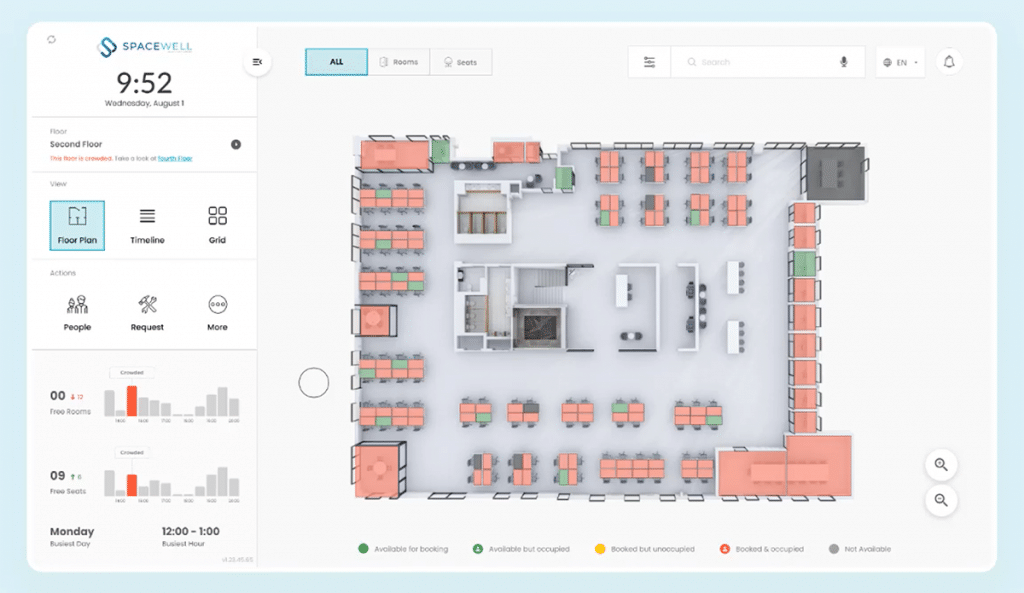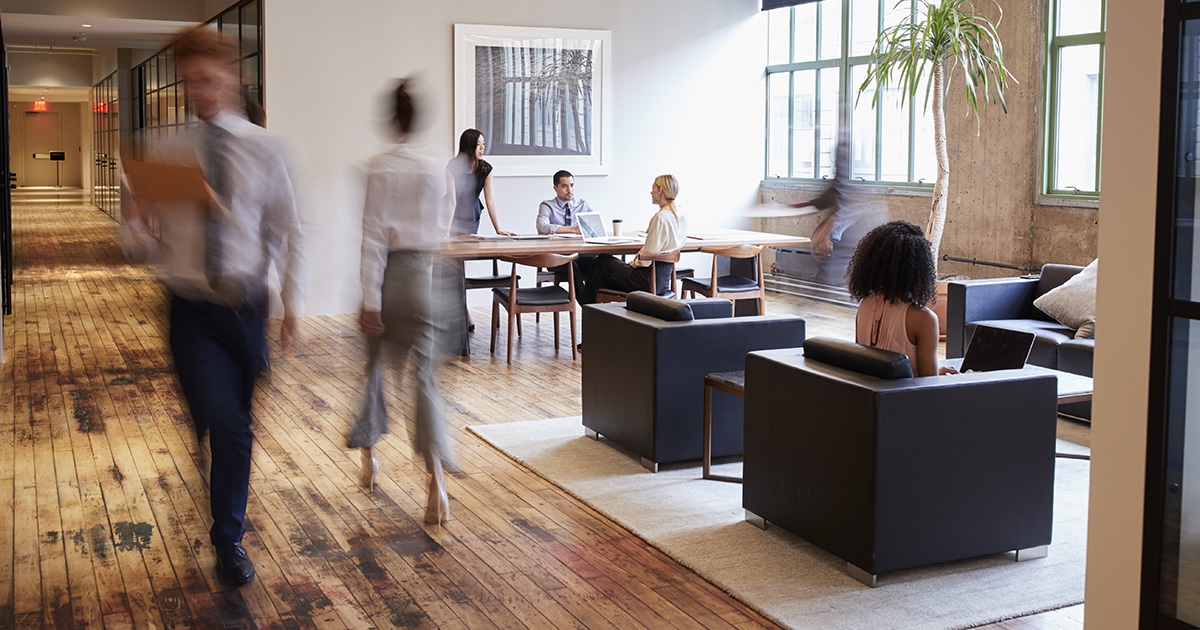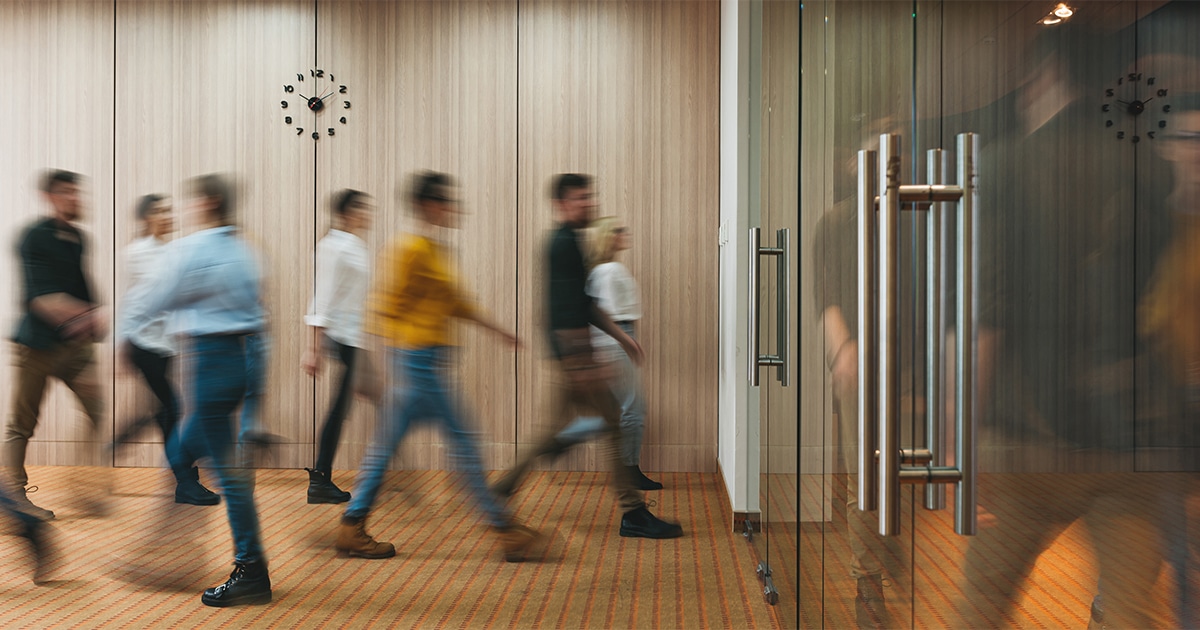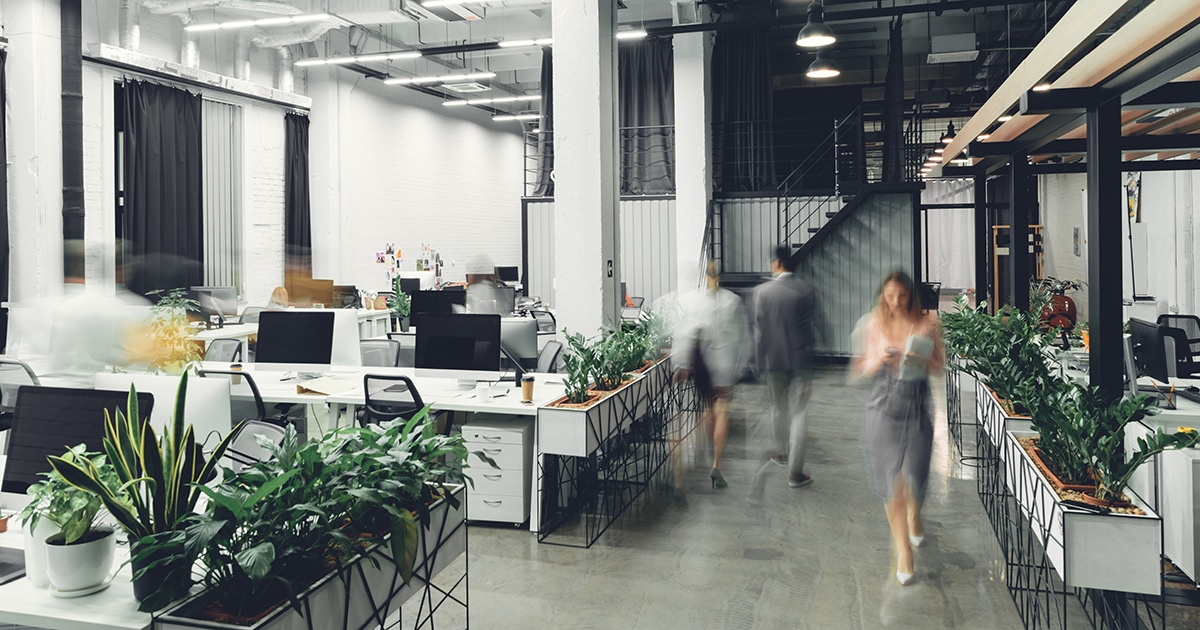One of the leading predictions for the hybrid workplace is that this new model will embrace flexibility in all its forms – including around seating. When only a portion of your employees comes to the office on any given day, assigned seating quickly reveals itself to be a highly inefficient practice. The anticipated growth of unassigned or flexible seating to reflect new ways of working will mark a significant shift: whereas assigned seating was employed in the majority of U.S. workplaces prior to the pandemic1, surveys suggest that flexible seating is likely to become the new norm2.
The challenge of flexibility
Flexible seating, of course, can mean many different things. In some cases, it may involve reserving a seat for an extended period (such as the whole day) one or more days in advance, while in other cases employees might change seats multiple times during a day using an ad hoc check-in/check-out system. Whether flexibility means office hoteling, hot desking, or something in between, it requires a robust reservation system to function smoothly.
Why is a reservation system so essential? Imagine a scenario where an employee comes into the office after a business trip. They are coming in later in the day when a lot of seats are already occupied. They might have a general sense of who else is in the office based on the meetings they have scheduled, but they aren’t entirely sure where they are sitting or even if they are just attending virtually. If they want to connect with their colleagues outside of the meeting, this means they will have to do a lot of searching. On top of this, our employee doesn’t yet know where they are sitting or what equipment is available at any given desk. As a result, they spend the first 20 minutes at the office searching for a space to sit and may not even have everything that they need to be fully productive at the office. They not only can’t perform at their best, but they come away with a negative perception of flexible seating altogether, assuming that it’s nothing more than a cost-cutting measure.
Instead, picture a scenario where the employee has access to a simple workplace app that lets them choose their workstation based on desk amenities, like a laptop docking station and dual monitor setup, as well as to look up their colleagues on the floorplan. They might be able to use the app to easily plan ahead and reserve a space before they even get into the office, saving them time and frustration, or they can simply scan their phone at their preferred workstation and reserve it on the go. Flexibility suddenly gives them the opportunity to find the space that suits their needs for the day and lets them easily switch between tasks or teams.
What’s different about hybrid flexibility?
Many aspects of this scenario are not new: everyday frictions around flexible seating already existed well before the pandemic and many of the challenges outlined above were already well understood. However, the hybrid office does add an additional layer of complexity to the flexible workplace.
First, in a hybrid work environment, the benefits of flexible seating arrangements increase dramatically. Each day (or part of a day) at which an employee is working from home represents a vacant workstation when seating is assigned. In high-rent areas, the cost of vacant seats can be substantial, representing wasted space that could be available to someone else, could be eliminated, or could be repurposed for collaboration. While waste might be reduced by assigning a single seat to multiple people who use it in shifts, this arrangement undermines one of the major reasons employees tend to like assigned seats: personalization. Moreover, shift-based assignments still ignore the fact that many workers shift between different types of spaces and activities at work and may not benefit from being tied to a single workstation. A flexible seating approach therefore generates gains in terms of real estate costs as well as productivity benefits for employees who want to find spaces that suit their changing needs.
Second, the need to account for and engage employees who are not at the office increases the importance of reservations as a tool for connecting people. Reservations data can be used as a basis of a people finder feature in workplace apps that makes it easy to find out who is in the office and where they are sitting – all without tracking employee movements. Allowing employees to opt out and share information transparently can help workers connect with each other when they’re in the office without being overly intrusive.
Finally, there are likely to remain some employee sensitivities around safety at the office for some time. Flexible office solutions have historically been rolled out as a way of increasing density, an objective that may be at odds with some employees’ health concerns. Measuring and sharing information about crowdedness in the office using live sensor data can be a valuable complement to reservation systems, helping employees choose spaces in areas that are more or less crowded depending on their comfort level. Deploying these systems in tandem can ensure that employees feel safe while also ensuring that space is being used efficiently.

Planning ahead
Ultimately, the pandemic revealed how important it is for workplaces to be able to adapt quickly to change. Flexible reservation systems that are coupled with live sensor data to quickly and accurately monitor utilization can help managers make informed decisions about how to manage new risks in the workplace. Robust reservation systems that can quickly adjust to account for social distancing needs, crowdedness concerns, and flexible work can be a powerful tool for generating returns as well as for managing risk, making them an important part of a future-proof office.
This post is part of a blog series about the way workplace technologies can facilitate a hybrid office and changing ways of working.
- See Gensler (2020). “US Workplace Survey 2020” https://www.gensler.com/workplace-surveys and CBRE (2020). “The Future of the Office Survey” https://www.cbre.com/-/media/files/future%20of%20work/future-of-the-office-v2.pdf for estimates of the prevalence of dedicated seating.
- CBRE survey results suggest that 70% of workplaces will have significantly or mostly unassigned seating in the future. https://www.gensler.com/workplace-surveys









